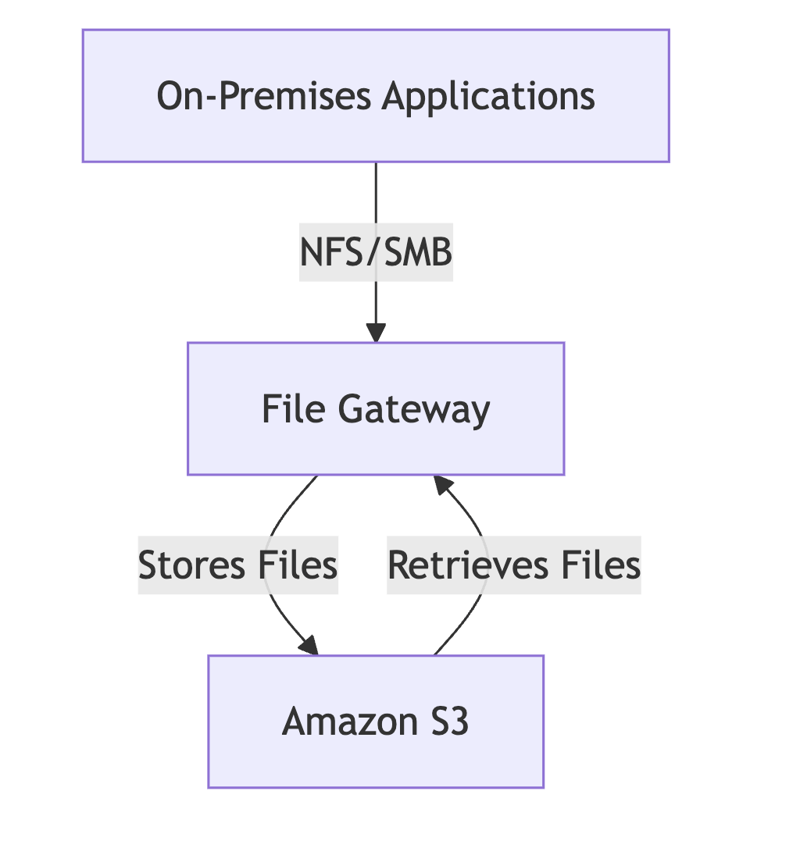The Role of Java in Today's Tech Industry.
Introduction - When did Java become popular? Java became very popular after it was introduced to the public by Sun Microsystems in 1995. It quickly became a favorite choice for creating web and business applications. One of the main reasons for its success is that Java can run on any computer or device, no matter what kind of system it uses. This is called "write once, run anywhere." Java also has strong features like good security and is easy to use, which made it a top choice for many developers. Some of the reasons why Java is preferred over other languages Higher Cross-Functionality: Java’s "Write Once, Run Anywhere" (WORA) philosophy is a significant strength. This is made possible by the Java Virtual Machine (JVM), which allows Java code to be compiled into bytecode. This bytecode is platform-independent and can be executed on any system that has a JVM, regardless of the underlying hardware or operating system. This makes Java highly versatile for building cross-platform applications, whether it's for desktop, mobile (Android), enterprise-level web applications, or even embedded systems. With minimal platform-specific adjustments, Java ensures that developers can reach a broader audience. Object-Oriented Language: Java is a fully object-oriented programming language, meaning it structures code around objects (data structures that contain both data and methods). Core concepts of OOP in Java, such as: Encapsulation: Keeping data safe from outside interference and misuse by bundling the data with the methods that operate on that data. Inheritance: Allowing a new class to inherit properties and behaviors from an existing class, promoting code reuse and logical class hierarchies. Polymorphism: Allowing objects of different classes to be treated as objects of a common superclass, which simplifies complex systems by reducing the number of unique methods needed for each type of object. By embracing these principles, Java encourages modularity and reusability, making it ideal for complex systems where code maintainability and scalability are critical. Summary: Java is well-suited for a variety of applications due to its high cross-functionality, strong object-oriented nature, and lightweight design. These qualities help developers create robust, maintainable, and adaptable software solutions that can run across different platforms and environments with ease. Frontend and Backend Development Get One Language Frontend Development: Primary Languages: HTML, CSS, and JavaScript are essential for creating the structure, design, and interactivity of web pages. Frameworks/Libraries: Tools like React, Angular, and Vue.js streamline the development process by offering reusable components and efficient state management. Backend Development: Popular Languages: Languages such as Python, Java, C#, PHP, Ruby, and JavaScript (with Node.js) are commonly used to handle server-side logic, database interactions, and API development. Frameworks/Libraries: Frameworks like Django (Python), Spring (Java), and Express.js (Node.js) provide structured environments for building scalable and robust applications. Technology Industry—Expanding Opportunities Java's Continued Relevance: Enterprise Applications: Java remains integral to enterprise solutions, with many Fortune 500 companies relying on it for mission-critical applications. Web Development: Frameworks like Spring facilitate the development of robust web applications, enhancing Java's role in this domain. Cloud Computing: Java's compatibility with cloud platforms such as AWS, Azure, and Google Cloud positions it well for developing scalable cloud-native applications. Mobile Development: While Kotlin has emerged as a preferred language for Android development, Java continues to be widely used, especially in legacy systems. Big Data and AI: Java's integration with big data technologies like Hadoop and its use in machine learning libraries underscore its versatility in data-driven applications. Specific Job Roles and Specializations: Java Architect: Designing complex systems and overseeing the architectural integrity of Java applications. Full-Stack Engineer: Proficiency in both frontend and backend technologies, with Java often used in backend development. DevOps Engineer: Utilizing Java-based tools to streamline development and operational processes. Industries with High Demand: Financial Services: Java's robustness and security make it ideal for developing financial applications that handle sensitive data. Healthcare: Developing applications for electronic health records and patient management systems using Java. E-commerce: Building scalable and secure e-commerce platforms with Java to support online transactions and user management. Skills to Focus On: Microservices Architecture: Understanding the design an

Introduction - When did Java become popular?
Java became very popular after it was introduced to the public by Sun Microsystems in 1995. It quickly became a favorite choice for creating web and business applications. One of the main reasons for its success is that Java can run on any computer or device, no matter what kind of system it uses. This is called "write once, run anywhere." Java also has strong features like good security and is easy to use, which made it a top choice for many developers.
Some of the reasons why Java is preferred over other languages
- Higher Cross-Functionality:
Java’s "Write Once, Run Anywhere" (WORA) philosophy is a significant strength. This is made possible by the Java Virtual Machine (JVM), which allows Java code to be compiled into bytecode. This bytecode is platform-independent and can be executed on any system that has a JVM, regardless of the underlying hardware or operating system. This makes Java highly versatile for building cross-platform applications, whether it's for desktop, mobile (Android), enterprise-level web applications, or even embedded systems. With minimal platform-specific adjustments, Java ensures that developers can reach a broader audience.
- Object-Oriented Language:
Java is a fully object-oriented programming language, meaning it structures code around objects (data structures that contain both data and methods). Core concepts of OOP in Java, such as:
Encapsulation: Keeping data safe from outside interference and misuse by bundling the data with the methods that operate on that data.
Inheritance: Allowing a new class to inherit properties and behaviors from an existing class, promoting code reuse and logical class hierarchies.
Polymorphism: Allowing objects of different classes to be treated as objects of a common superclass, which simplifies complex systems by reducing the number of unique methods needed for each type of object. By embracing these principles, Java encourages modularity and reusability, making it ideal for complex systems where code maintainability and scalability are critical.
Summary:
Java is well-suited for a variety of applications due to its high cross-functionality, strong object-oriented nature, and lightweight design. These qualities help developers create robust, maintainable, and adaptable software solutions that can run across different platforms and environments with ease.
Frontend and Backend Development Get One Language
Frontend Development:
Primary Languages: HTML, CSS, and JavaScript are essential for creating the structure, design, and interactivity of web pages.
Frameworks/Libraries: Tools like React, Angular, and Vue.js streamline the development process by offering reusable components and efficient state management.
Backend Development:
Popular Languages: Languages such as Python, Java, C#, PHP, Ruby, and JavaScript (with Node.js) are commonly used to handle server-side logic, database interactions, and API development.
Frameworks/Libraries: Frameworks like Django (Python), Spring (Java), and Express.js (Node.js) provide structured environments for building scalable and robust applications.
Technology Industry—Expanding Opportunities
- Java's Continued Relevance:
Enterprise Applications: Java remains integral to enterprise solutions, with many Fortune 500 companies relying on it for mission-critical applications.
Web Development: Frameworks like Spring facilitate the development of robust web applications, enhancing Java's role in this domain.
Cloud Computing: Java's compatibility with cloud platforms such as AWS, Azure, and Google Cloud positions it well for developing scalable cloud-native applications.
Mobile Development: While Kotlin has emerged as a preferred language for Android development, Java continues to be widely used, especially in legacy systems.
Big Data and AI: Java's integration with big data technologies like Hadoop and its use in machine learning libraries underscore its versatility in data-driven applications.
- Specific Job Roles and Specializations:
Java Architect: Designing complex systems and overseeing the architectural integrity of Java applications.
Full-Stack Engineer: Proficiency in both frontend and backend technologies, with Java often used in backend development.
DevOps Engineer: Utilizing Java-based tools to streamline development and operational processes.
- Industries with High Demand:
Financial Services: Java's robustness and security make it ideal for developing financial applications that handle sensitive data.
Healthcare: Developing applications for electronic health records and patient management systems using Java.
E-commerce: Building scalable and secure e-commerce platforms with Java to support online transactions and user management.
- Skills to Focus On:
Microservices Architecture: Understanding the design and implementation of microservices using Java to build scalable applications.
Cloud Integration: Gaining expertise in deploying Java applications on cloud platforms and utilizing cloud-native features.
Agile Methodologies: Familiarity with Agile practices enhances collaboration and efficiency in development teams.
Staying updated with the latest Java versions and associated technologies is crucial for maintaining a competitive edge in the evolving tech landscape. Engaging with the developer community and contributing to open-source projects can also provide valuable experience and networking opportunities.
The Role of Java in Today’s Tech Industry
Enterprise Adoption and Scalability: Java's robustness and scalability have made it the preferred choice for large enterprises. Its ability to handle complex, high-volume applications is enhanced by features like multithreading and frameworks such as Spring, which facilitate the development of scalable solutions.
Performance, Security, and Stability: Java prioritizes security through mechanisms like bytecode verification and sandboxing, ensuring that applications run securely. This focus on security, combined with its efficient memory management and garbage collection, contributes to Java's reputation for stability and reliable performance, even under heavy workloads.
Thriving Developer Community: The extensive and active Java developer community plays a pivotal role in the language's evolution. This community contributes to a rich ecosystem of libraries, frameworks, and tools, providing developers with resources that simplify development processes and foster continuous learning and support.
Legacy and Reliability: Java's long-standing presence in the industry has resulted in a vast number of legacy systems built using the language. The language's backward compatibility ensures that these systems can be maintained and updated with minimal disruption, preserving the reliability that enterprises depend on.
Evolving with the Times: Java’s Impact on Modern Software Frameworks
Java remains a cornerstone in modern software development, significantly influencing frameworks and applications across various domains. Here's how Java continues to shape contemporary development:
- Java's Influence on Modern Software Frameworks:
Ecosystem and Libraries: Java offers a rich ecosystem with numerous libraries and frameworks that streamline development. Tools like Deeplearning4j and Weka enable developers to incorporate advanced analytics directly into applications.
Scalability and Performance: Java's architecture, including features like garbage collection, supports the creation of scalable and high-performance applications, essential for modern software demands.
Community and Support: A large and active Java community contributes to extensive resources, tutorials, and open-source projects, aiding developers in various tasks.
Cloud and Enterprise Applications: Java is a preferred choice for building cloud-native applications and enterprise systems, leveraging its strengths in scalability, security, and platform independence.
Modern Features: Java continues to evolve, incorporating modern language features and design patterns, making it adaptable to contemporary development needs.
Big Data and AI: Java's compatibility with tools like Apache Spark and Hadoop, along with its ability to integrate with AI solutions, positions it as a key player in big data and AI development
DevOps and CI/CD: Java's suitability for DevOps practices and CI/CD pipelines, coupled with its compatibility with tools like Docker and Kubernetes, facilitates efficient and automated deployments.
Modularity: Java 9 introduced the Java Platform Module System (JPMS), allowing developers to modularize applications and libraries, impacting how large applications are structured.
Legacy System Compatibility: Java's ability to integrate with legacy systems and its extensive vendor support make it a dependable option for enterprises enhancing their systems with AI.
Future Prospects: Innovations in Java Frameworks for Applications & Development
In 2025, Java continues to evolve, embracing modern development practices and integrating advanced technologies. Key trends shaping Java's landscape include:
Cloud-Native Development: Java frameworks are increasingly optimized for cloud environments, enhancing scalability and flexibility. Frameworks like Spring Boot, Quarkus, and Micronaut facilitate the development of cloud-native applications, enabling efficient resource utilization and rapid deployment.
Microservices Architecture: Java supports the creation of modular, independent services through microservices architecture. Spring Boot, Quarkus, and Micronaut are instrumental in building microservices, promoting efficient scaling and maintenance.
Enhanced Performance with GraalVM: GraalVM enables Java applications to be compiled into native images, improving startup times and reducing memory consumption. This advancement enhances application performance, making it more efficient and responsive.
AI and Machine Learning Integrations: Java's role in AI and machine learning is expanding, with frameworks like DeepLearning4j and TensorFlow for Java facilitating the development of AI applications. These tools allow developers to build and deploy machine learning models within Java applications, driving innovation across various industries.
Serverless Computing: Java's compatibility with serverless platforms such as AWS Lambda and Google Cloud Functions allows developers to build applications without managing server infrastructure, promoting scalability and cost-effectiveness.
DevOps Integration: Java development is increasingly aligned with DevOps practices, utilizing tools like Docker and Kubernetes for containerization and orchestration. This integration streamlines development workflows, enhancing continuous integration and continuous deployment (CI/CD) processes.
Modularization with Java Platform Module System (JPMS): Introduced in Java 9, JPMS allows developers to modularize applications, improving code organization, maintainability, and scalability.
Focus on Security: Java continues to prioritize application security, offering enhanced features and libraries to protect against vulnerabilities, ensuring robust and secure applications.
These developments underscore Java's adaptability and its commitment to meeting the evolving demands of modern software development, solidifying its position as a leading choice for building scalable, efficient, and secure applications.
Conclusion
In conclusion, the Java programming project has provided us with a solid foundation in Java programming, allowing us to explore the vast possibilities that this language offers. It has been a journey of growth and learning, and we are now better-equipped programmers, ready to take on more complex and exciting projects in the future.
Why Choose Techno Kryon for your Offshore needs?
Hire our Java developers at Techno Kryon to take advantage of cost-effective offshore development backed by a highly skilled Indian talent pool, helping you save up to 70% compared to local hiring in countries like the USA, UK, or Australia. We offer flexible engagement models—be it project-based, partner offshore development, or self-managed teams—so you can choose what fits your business needs best. With a dedicated team working exclusively on your projects, zero overhead costs, and services ranging from application development and migration to maintenance and 24x7 support, Techno Kryon ensures reliable delivery, seamless communication, and high-quality outcomes for all your offshore requirements.









































































































































































![[The AI Show Episode 144]: ChatGPT’s New Memory, Shopify CEO’s Leaked “AI First” Memo, Google Cloud Next Releases, o3 and o4-mini Coming Soon & Llama 4’s Rocky Launch](https://www.marketingaiinstitute.com/hubfs/ep%20144%20cover.png)



























































































































![[DEALS] The All-in-One Microsoft Office Pro 2019 for Windows: Lifetime License + Windows 11 Pro Bundle (89% off) & Other Deals Up To 98% Off](https://www.javacodegeeks.com/wp-content/uploads/2012/12/jcg-logo.jpg)




























![Is this too much for a modular monolith system? [closed]](https://i.sstatic.net/pYL1nsfg.png)






















































































































_Andreas_Prott_Alamy.jpg?width=1280&auto=webp&quality=80&disable=upscale#)





























































































![What features do you get with Gemini Advanced? [April 2025]](https://i0.wp.com/9to5google.com/wp-content/uploads/sites/4/2024/02/gemini-advanced-cover.jpg?resize=1200%2C628&quality=82&strip=all&ssl=1)













![Apple Shares Official Trailer for 'Long Way Home' Starring Ewan McGregor and Charley Boorman [Video]](https://www.iclarified.com/images/news/97069/97069/97069-640.jpg)
![Apple Watch Series 10 Back On Sale for $299! [Lowest Price Ever]](https://www.iclarified.com/images/news/96657/96657/96657-640.jpg)
![EU Postpones Apple App Store Fines Amid Tariff Negotiations [Report]](https://www.iclarified.com/images/news/97068/97068/97068-640.jpg)
![Apple Slips to Fifth in China's Smartphone Market with 9% Decline [Report]](https://www.iclarified.com/images/news/97065/97065/97065-640.jpg)



































































































































